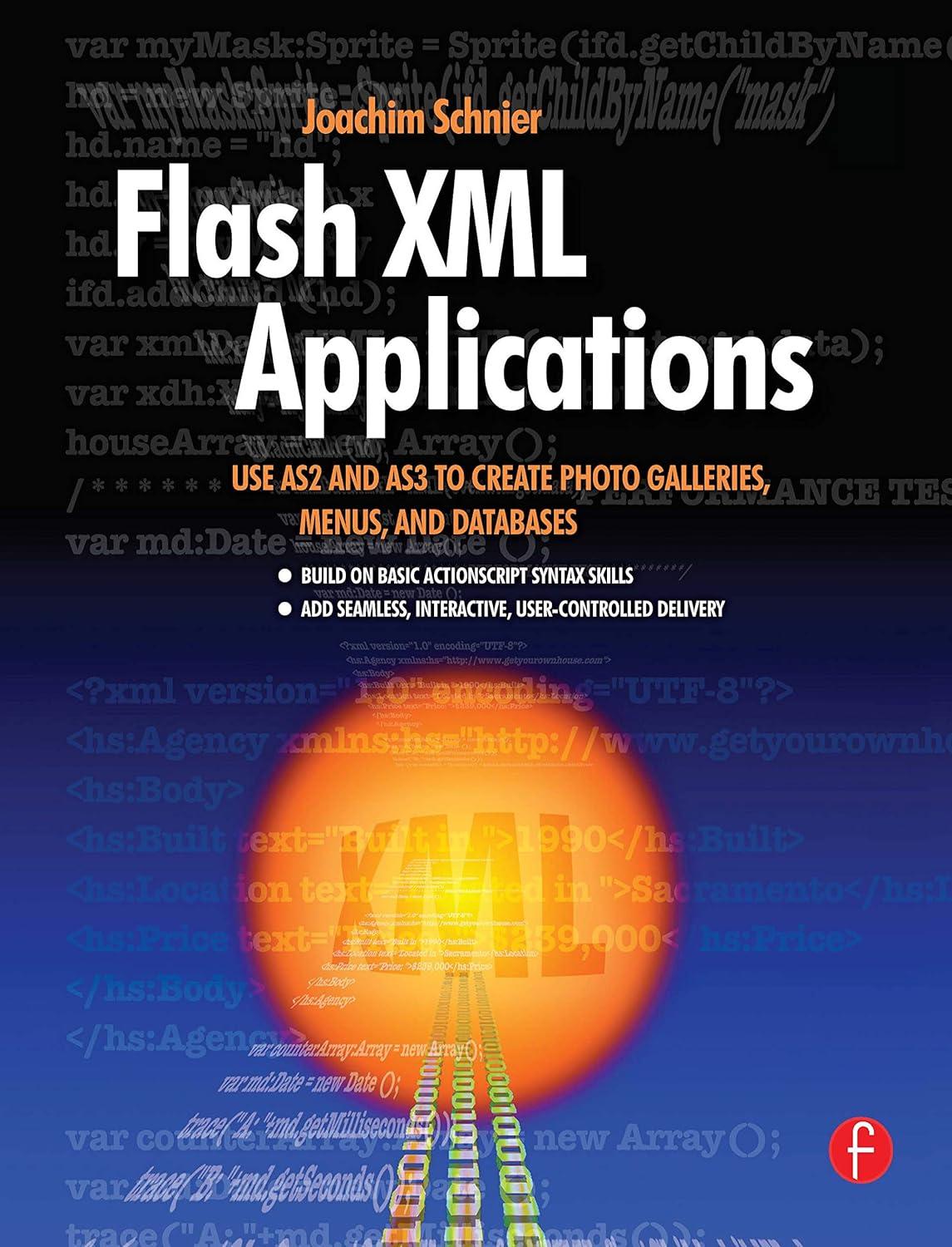Question
Networking for Software Developers Lab 2 Shopper Class. This is an individual lab. Using a jupyter notebook (best done on google colab) write the python
Networking for Software Developers
Lab 2 Shopper Class.
This is an individual lab. Using a jupyter notebook (best done on google colab) write the python statement to define a Shopper class. The test harness is provided to you by the instructor as well as the resulting output given.
Description of the Shopper Class
Class variable
There are six class variables i.e. variables that are shared by all objects of this class
__prices
This is a python dict that contains the grocery items as well as their unit price. This is defined as follows:
{ 'apple': 1.99, 'bread': 2.19, 'milk': 4.96, 'pepper': 1.25 }
__sale_items
This is a list that contains all the items that are on sale in this period. A discount of 15% is applied to the price of each item in this collection. This is defined as follows:
'pepper banana'.split()
Four other class variable that are define as follows:
__credit_threshold = 6
When the total cost of a purchase exceeds this amount then a discount is applied to the cost
__default_price = 2.50
If an item is not found in the price list then this will be the default price
__volume_discount = 0.9
This is the rate of discount when the total cost exceeds the credit_threshold
__sales_discount = 0.85
This is the rate of discount on an item if this item is in the __sales_time list.
Constructor
The constructor takes two argument that represents the name of the shopper and the amount of money she has. It assigns the argument to appropriate instance variable. It also creates an empty list to store the purchases.
Each purchase is a single tuple comprising of the name of the item and the price actually paid for the item.
Instance property
There is a single instance property that returns the name of this shopper
Class method
There are two class methods that returns the price list and the sales items.
Instance method
There are two instance method:
purchase
This method takes a list of items to be purchase. It calculates the total price of the purchase by processing each item in the argument as show below:
The price of an item is obtained from the price list. If it is not found in the price list then the default price is used. [How to determine if an item in not in the dict]
If the item is in the sales list a discount is applied to the price
The item as well as the result price is added to the list as a tuple. [How to create a tuple with name and price and how to add the tuple to the list]
When all the items are processed, if the final cost is over the credit threshold, then a discount is applied to this amount and then subtracted from the amount of money this object has left over.
__str__
This method returns a string representing this object with all its purchases.
How to do this assignment.
From the above description and test harness and the result output below, try to deduce the definition of the Shopper class. Code this class in a jupyter notebook and copy the test harness to a cell below. Execute the notebook and ensure that the output matches EXACTLY with the output on the following page.
You must use python f-strings for your output.
Documentation.
Because the code is so simple no code documentation is required, however you must put your name and the current date somewhere at the top of your code.
How to submit this assignment.
Make the notebook shareable and submit the link to the course dropbox.
See the course documentation on deadlines.
Test Harness
You may not change the test harness.
print(f'Price dict: {Shopper.price_list()}')
print(f'Sales list: {Shopper.sale_items()}')
nar = Shopper('Narendra', 20) #create a shopper object
print(f' {nar}') #display the object
items = 'bread milk'.split() #list of items to buy
print(f' {nar.name} is purchasing: {items}')
nar.purchase(items) #buy the items
print(f'{nar}') #display the object
items = 'apple pepper cauliflower'.split()
print(f' {nar.name} is purchasing: {items}')
nar.purchase(items)
print(f'{nar}') #display the object
#you don't need to understand the code below
#it is for verification purposes
members = [member for member in dir(Shopper) if not member.startswith('_')]
print(f' Public members of the class: {members}')
properties = [member for member in members if not callable(getattr(Shopper, member))]
print(f'Public properties: {properties}')
methods = [member for member in members if callable(getattr(Shopper, member))]
print(f'Public methods: {methods}')
Program Output
Your output must be identical to the below.
Price dict: {'apple': 1.99, 'bread': 2.19, 'milk': 4.96, 'pepper': 1.25}
Sales list: ['pepper banana']
Narendra cash in hand $20.00
items:
[]
Narendra is purchasing: ['bread', 'milk']
Narendra cash in hand $13.56
items:
[('bread', 2.19), ('milk', 4.96)]
Narendra is purchasing: ['apple', 'pepper', 'cauliflower']
Narendra cash in hand $8.01
items:
[('bread', 2.19), ('milk', 4.96), ('apple', 1.99), ('pepper', 1.0625), ('cauliflower', 2.5)]
Public members of the class: ['name', 'price_list', 'purchase', 'sale_items']
Public properties: ['name']
Public methods: ['price_list', 'purchase', 'sale_items']
Step by Step Solution
There are 3 Steps involved in it
Step: 1

Get Instant Access to Expert-Tailored Solutions
See step-by-step solutions with expert insights and AI powered tools for academic success
Step: 2

Step: 3

Ace Your Homework with AI
Get the answers you need in no time with our AI-driven, step-by-step assistance
Get Started


